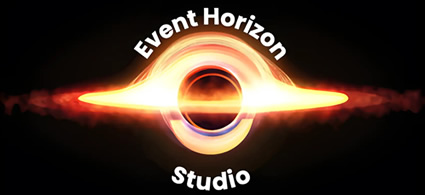VIDEO GAMES FOR HOLLYWOOD FILMS
Most definitely. Just like DJ’s went from “that record player nerd” to gods, Gamers in 2021 get recognized for their truly “insane” skills and now earn millions. With the majority of the youth population raised playing games, they not only ran a character through threats, they got emotionally attached to protecting their avatar, and this is the biggest step any major film must make to be a blockbuster. The new immersive experiences and addition of Augmented Reality through Apps will drive films like Pokeman Go, deliver franchises, merchandise, and Cosplay. Blockchain will allow players to carry winnings and recognition with them as it intersects with IoT in public places, and nReal glasses will create holograms people can interact with after the movies. The profits from the game alone will more than pay for the movies. The first burden is on the Director and Screenwriter, who both must understand how to merge spatial stories with internal dialog and personal analysis so that gamers suspend their need to be making choices with relating vicariously and voyeuristically with the characters. This means the narrative takes second place to the visuals. And all of this still has to deliver “meaning” to a huge demographic, that must somehow relate to the challenges of the characters. Are there superhits that directly compare? Yes! Passion of the Christ, with almost no dialog. John Wick, with long periods of no dialog when the action defines the character’s hero journey.
How can Hollywood adapt to properly bring these titles from games to films?
For a film to satisfy gamers, Producers, Directors, and Studios must integrate a higher understanding of how players get attached to avatars and get satisfaction from beating almost impossible survival algorithms built into the game. The adrenaline rush and hyper-focus in a game can be translated to the film by the right Director savvy in cinematic tricks that excite the brains of avid players. This new “Hero Journey” must attach to the cultural highs of several nations, slightly modifying the dialog and characters so that players from the Japan, China, and ASEAN nations – who number almost one billion – feel culturally embraced into the film (good example is the slight animation changes made in animated films already to achieve this.) The biggest bonus is that 5G will deliver innovative user experiences for theater audiences on a big scale, that can be replicated on a smaller scale at home. Finally, building in real life user skills for the audience can result in lifestyle gains and popularity: for example, top gamers are on the top of the hiring list for Wall Street, The Pentagon, Telecoms, and Social Media. Every movie has the potential to train anyone in the audience in the two key factors the entire world hires, as per the following quotient:
Observation Skills
Adaptation Speed
By “tweaking” an already great screenplay,
gamers can be given the experiences they live for on and off,
to keep their gamer reactions entertained
as much as their movie-goer empathy.
Considering the limit of previous hit games,
can video game properties rescue Hollywood?
Yes, because while existing games with built-in fan bases will surely draw gamers into the theater, most gamers are looking for the next evolution and gamer-high. New films presenting rich and original gamer worlds might be more valuable than superhits like Mario Brothers or Resident Evil. If the Producer, Writer, and Director properly built-in gamer challenges in the film’s story, just noticing them and using the hints for the next evolution of games creates a loop of fandom. Theater experiences can also change so that films will be viewed from gamer booths like the gamer playoffs now. The marketing model needed already exists: just look at how books written by John Green, Tom Clancy, John Le Carre, or Ian Fleming drove audiences into theaters again and again. These authors are replaced by Corey May, Susan O’Conner, and Olafsson, who happens to believe the same storytelling that made movies so elemental to society share most properties with game stories. The head of production must have a superior understanding of global gamers, how they are the same yet different, is key to maximizing the adrenaline as well as emotions prompted by visceral films. Creating the game at the same time as creating the film allows each to propel trailer material and fan support. Tie-ins with dozens of companies (McDonald’s, Nike) that encourage Augmented Reality will add to revenue. Considering that the standard financing system destroyed profitability because it relied on “boomer thinking” the best medicine for recovery is to learn from the new user generation: “Culture eats strategy for breakfast.” Blockchain is the engineering tool that will allow films, games, Apps, IoT, and Augmented Reality to combine on multiple levels just like a game – and Blockchain will also protect the I.P. Rights across all mediums while it identifies the top fans in real time. Interoperable Tokens will be a payoff for gamers that go to the movie, drive a next generation of Social Media filters usable on Instagram, and make the theater experience so much more engaging not just during the film but for weeks and months after.
